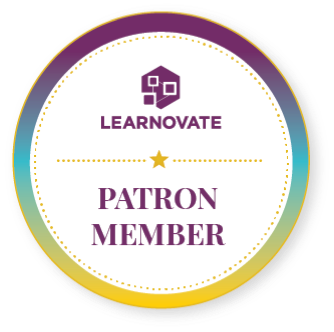The concept of ‘learning objectives’ is the compass that guides learners and educators on their academic voyage. It is not merely an administrative checkbox; learning objectives are foundational to effective teaching and learning. They set the path, define the finish line, and ensure that every standardized learning experience is both purposeful and effective.
For academic professionals using Akari Curriculum Management Software, understanding and implementing learning objectives is key to maximizing its value. By clarifying and aligning learning objectives, you can customize courses to meet students’ needs, improve engagement, and bolster student outcomes. In this comprehensive guide, we will take you through the nuances of learning objectives, their importance, and how advanced planning tools can transform them from abstract ideals to actionable, measurable steps in the educational process.
Defining Learning Objectives
A learning objective is a concise, measurable statement that specifies what the learner will know or be able to do as a result of an educational experience. These objectives serve as clear expectations for instruction. They outline the purpose, focus, and proposed outcomes of a learning encounter, whether it’s a class, a module, or an assessment.
Learning objectives need to be specific and actionable. They answer the question “What will students learn?”, and they are designed to be observed and measured. Without ambiguity, they demystify the learning process for students and set a tone for accountability and progress evaluation.
The Anatomy of a Strong Learning Objective
- Specificity: Clearly denotes the subject matter and expected outcome.
- Action-Oriented: Uses active verbs that represent respective cognitive processes.
- Measurability: Allows for assessment and evaluation of student understanding.
- Relevance: Is directly connected to broader course goals and real-world applications.
The Principles of Effective Learning Objectives
Understanding what makes a learning objective effective is crucial. It’s not enough to have a statement on paper; it needs to work within the framework of your curriculum, pedagogical methods, and assessment strategies.
The SMART Criteria
Learning objectives that are Specific, Measurable, Achievable, Relevant, and Time-bound (SMART) are more likely to lead to successful learning outcomes. This framework helps educators craft objectives that are both realistic and impactful.
- Specific: Objectives should be well-articulated and precise to prevent misinterpretation.
- Measurable: There should be a defined way to determine if the objective has been met or not.
- Achievable: Objectives suit the learners’ level and aim to stretch, but not overwhelm them.
- Relevant: Learning objectives should be connected to learners’ prior knowledge and future aspirations.
- Time-bound: Each objective should have a timeline which helps in planning and pacing the course.
Key Areas of Focus for Effective Learning Objectives
The rollout of effective learning objectives is a layered process, encompassing strategic alignment, clarity, and unwavering focus.
Strategic Alignment with Institutional Goals
Learning objectives should align with broader institutional goals, whether they pertain to academic standards, program outcomes, or institutional mission statements. This ensures that every classroom contributes meaningfully to overarching educational objectives.
Clarity in Communication
Clarity in learning objectives is paramount. Both educators and learners must understand the intent and expectations of the learning experience. Ambiguity can lead to misdirection, confusion, and a disjointed educational experience.
Unwavering Focus on Student Outcomes
The end goal of learning objectives is to foster student growth and success. Objectives must be student-centered, structured in a way that promotes active learning, and facilitates achievement.
Leveraging Technology to Enhance Learning Objectives
Capitalizing on the capabilities of Akari Curriculum Management Software can revolutionize the way learning objectives are crafted, managed, and monitored.
Automated Alignment of Course Objectives
Akari Software streamlines the alignment process by enabling automatic mapping of course objectives to assessment methods and student outcomes. This automated feature saves time and ensures that all components of the curriculum are cohesive and support each other.
Centralized Management and Accessibility
Information about learning objectives is centralized and accessible within Akari Software. This ensures that all stakeholders from faculty to administrators can engage with and understand the objectives, fostering a culture of transparency and collaboration.
Data-Driven Decision Making
The software equips academic leaders with data on the attainment of learning objectives. This insight allows for evidence-based adjustments in course design, teaching approaches, and overall curriculum development.
Conclusion: The Vanguard of Enhanced Academic Experiences
Learning objectives are the bedrock of educational design. They shape the flow of learning experiences and facilitate the attainment of academic goals. For academics and higher education staff, they are not mere procedural hurdles but the lifeblood of an enriched and effective curriculum.
For those utilizing Akari Curriculum Management Software, the integration of learning objectives into the fabric of their educational programming can lead to dynamic, engaging, and achievement-focused learning environments. Through the software’s tools and features, instructors can ensure that their teaching reflects the precise path and destination laid out in the learning objectives.
By understanding the principles and power of learning objectives, and harnessing the potential of technology to manage and monitor them, educators stand at the threshold of a new era—where teaching is not just an art, but an exact science that can be both systematically designed and efficiently executed.
